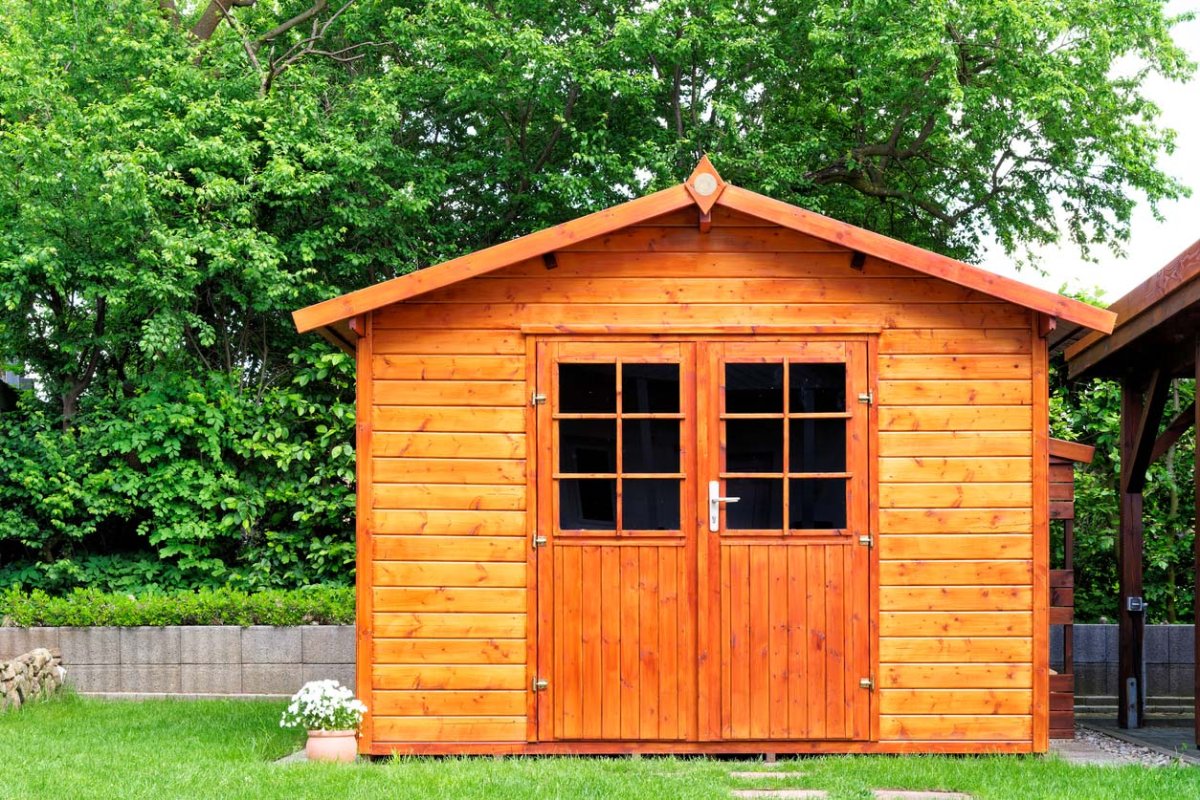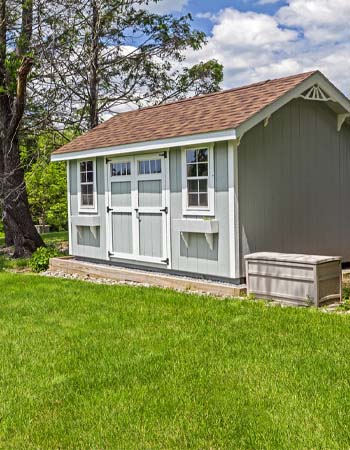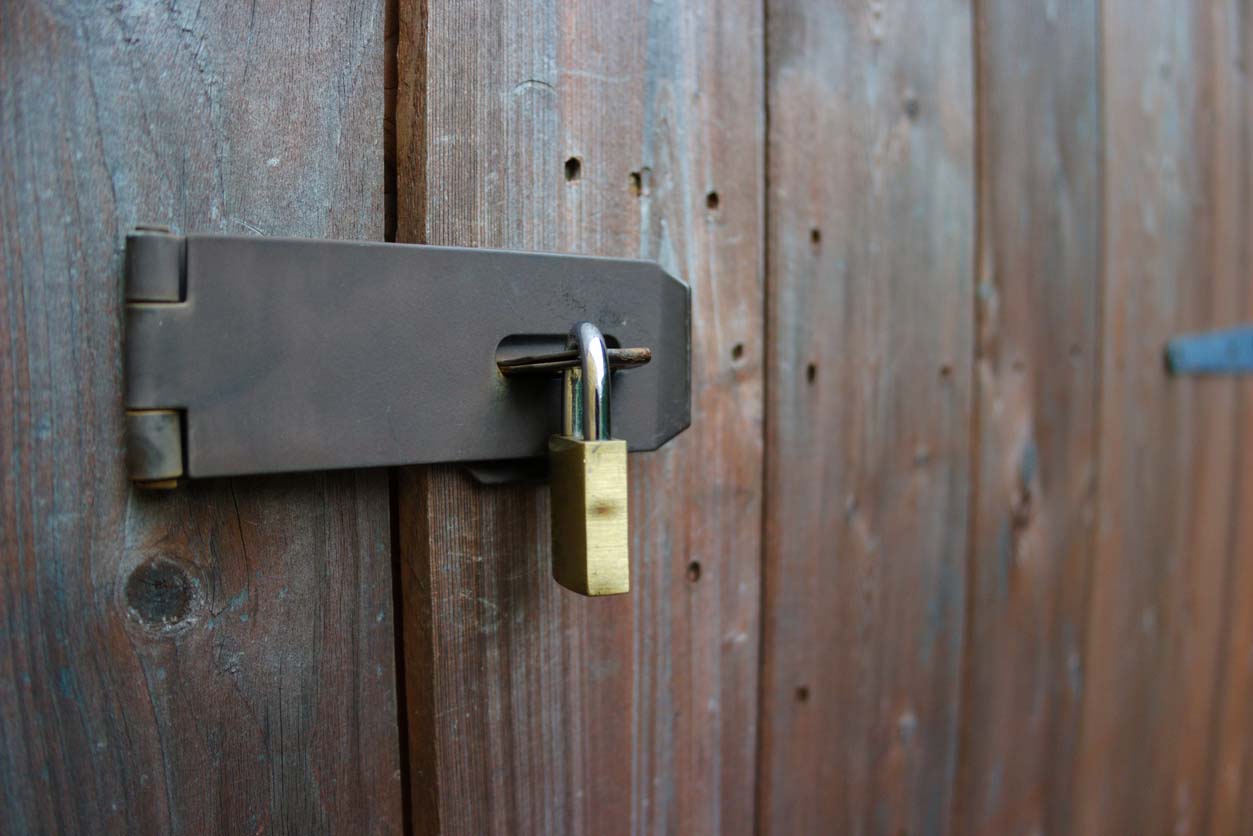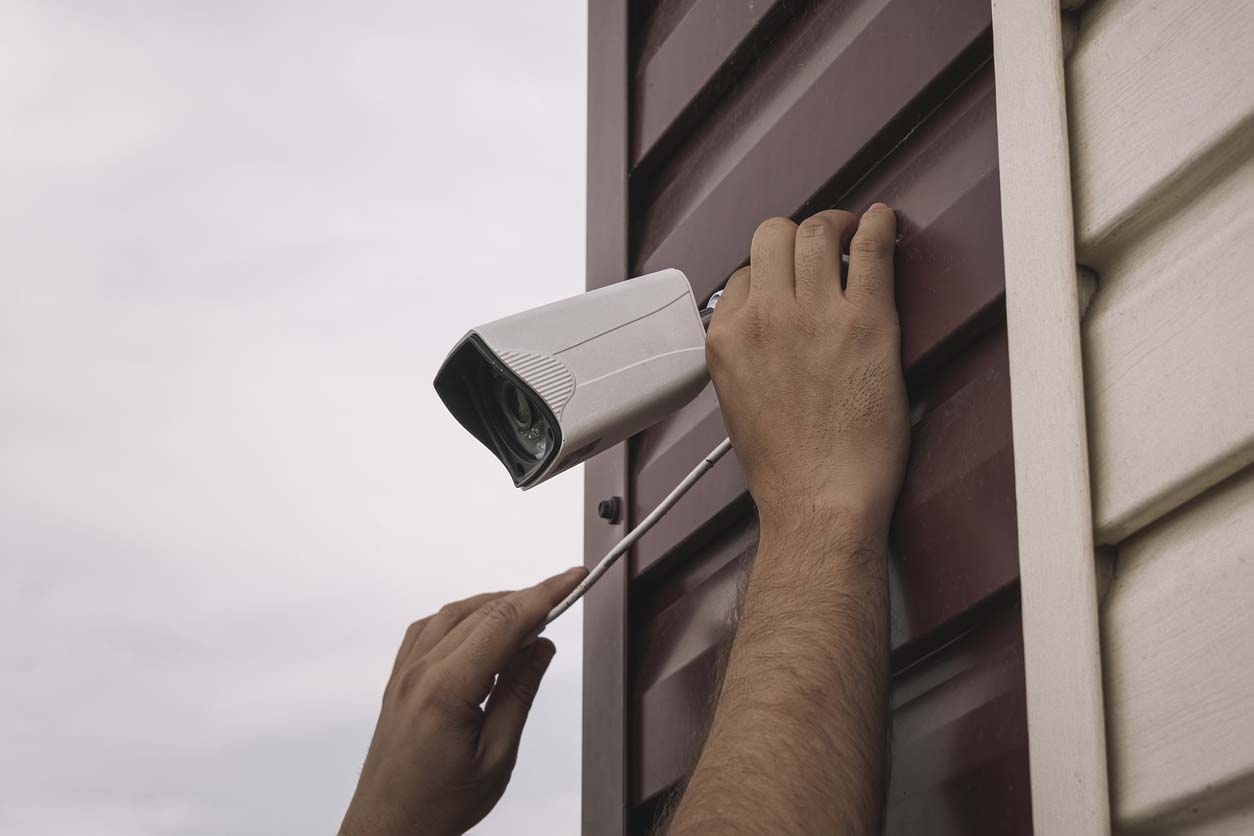

We may earn revenue from the products available on this page and participate in affiliate programs. Learn More ›
Q: I recently purchased a shed to store my lawn mower and gardening equipment, as well as my children’s bikes. I’ve installed a heavy-duty lock on its door, but I’m worried that won’t be enough to keep all my items safe. What else can I do to improve my shed security?
A: Sheds offer an easy, affordable way to keep your outdoor gear organized. However, even the best storage sheds may not come with many preinstalled security features, meaning you’ll need to take extra precautions to keep everything inside safe from prying eyes and sticky fingers. Thankfully, most of these additional precautions are both affordable and easy to implement—allowing you to improve your shed security in a single afternoon.
Along with securing your shed using the best storage shed locks, you may want to consider anchoring your shed to the ground and reinforcing its frame. As time goes by, you’ll want to pay close attention to weak spots in your shed’s exterior and repair them promptly. Looking beyond your shed, there are several things you can do throughout your yard to improve shed security, such as installing a fence or investing in one of the best home security systems (such as one from Vivint, ADT, or SimpliSafe).
Here’s a closer look at all the ways you can improve shed security and ensure your shed stays safe for years to come.
Choose the shed’s location wisely.

The first thing for someone to consider when investing in one of the best sheds is its placement in the yard. Believe it or not, a shed’s location can have a dramatic impact on its overall security. Homeowners will want to install it on a flat surface away from tree roots and tree branches. Falling branches can damage a shed’s roof, while underground roots can poke through the soil and damage its foundation. In time, these damaged areas can become weak spots that are targeted by burglars. Homeowners will also want to consider keeping the shed away from areas that are prone to flooding or high winds, as these will degrade its durability and longevity.
Make sure your fence and gate are in good condition and properly secured.
The best way to deter would-be burglars from breaking into a shed is to keep them out of their yard altogether. To this end, homeowners will want to ensure their fence and gate are intact and in good condition. If there’s no easy way to get into the yard, a stranger will be less likely to try and crack into the shed. Homeowners may also want to consider installing a tall privacy fence if they don’t yet have one installed, as it can hide the shed from the public eye. Fences also make it difficult to remove large items (like lawn mowers) from the property, as burglars will have to break through both the lock for shed doors and the front gate.
Securely anchor your shed to the ground.
Anchoring a shed to the ground provides additional weatherproofing. A shed that’s been securely fastened to a concrete slab or gravel foundation will better withstand gusts of wind, preventing it from becoming damaged. For those who live in areas with high winds, anchoring the shed can also prevent it from tipping over. Homeowners may want to hire a professional if they don’t feel comfortable with the anchoring process, as this is a critical step to keeping the shed in mint condition. An unanchored shed is prone to tipping over or shifting on the property, which could impact its frame and create openings for animals and intruders.
Reinforce the shed’s frame and roof and repair any weak spots in the structure.
Every shed is built to different quality standards. Secure storage sheds with hefty price tags often come with additional structural supports, while lower-priced sheds might only feature a structural skeleton. If the shed falls into the latter category, the homeowner may want to consider reinforcing the shed’s frame with additional wood studs. This will help it better withstand impacts—including impacts from would-be intruders or inclement weather. The shed’s roof can be reinforced in much the same way, and homeowners can even find premade roof- strengthening kits at most hardware stores. Once the shed has been reinforced, homeowners will need to periodically check the shed for minor damage, as small cracks in the roof or joints could become bigger issues down the road.

Install a security lock or padlock and make sure you keep the shed locked when not in use.
Locking a shed with a security lock or padlock is arguably the most important thing a homeowner can do to keep their shed safe. The best shed door security lock is something heavy-duty that can’t be easily broken or quickly picked. If a homeowner opts for a lock with a key, they’ll want to keep the key somewhere safe. If they opt for a combination padlock, the homeowner will want to randomly rotate all the dials to prevent anyone from guessing their code. Sheds with two doors will need a shed double-door lock, which secures both doors with a single lock. All these lock types are readily available at most hardware stores and online.
Regardless of the shed lock type used, homeowners will want to remember to place it securely on the shed when it’s not in use. Locks for shed doors are only useful when installed—but forgetting to reinstall the lock after a day’s work is common. At the very least, homeowners will want to make sure the lock is set before they go to bed at night, though they can try to get into the habit of locking the doors if the shed will be out of sight for more than a few minutes.
Since a shed is exposed to the elements, so too is its lock. That makes it important to find outdoor locks for sheds that are weather-resistant and won’t corrode due to rain or snow.
Tighten or replace the hinges on the shed door.
Like all hinges, the ones on a shed can become loose over time. This typically happens when too much weight is placed on the door—either from tools hanging on the back or from people (often children) swinging on them. If a homeowner notices their shed’s doors are starting to become loose, they can tighten the hinges with a screwdriver or install a brace if the entire shed door is sagging. Alternatively, hinge replacement kits work well if the hinges are too damaged to be repaired. Keeping hinges in working condition is crucial to shed security, as it prevents thieves from easily removing the door and gaining access inside.
Keep tools and equipment out of sight, or install window coverings to prevent thieves seeing your shed’s contents.
When placing items inside a shed, homeowners will want to stick to the “out of sight, out of mind” mentality. Expensive objects that are visible through a shed window are tempting for burglars, and an easy way to deter prying eyes is by hiding valuables. Homeowners can do this by hanging window coverings in their shed, which offers an affordable yet foolproof way to hide their gear. They can also use storage containers, buckets, blankets, or strategically placed shelving to hide objects inside. If a burglar can’t tell what’s on the other side of the windows, they’re less likely to risk breaking into the shed.
Consider installing window bars to prevent the shed’s windows from being pried open.
Shed doors and windows are the primary access points for burglars. Much like a padlock helps with securing shed doors, window bars serve to enhance the security of a shed’s windows. These come in a variety of styles, but the most commonly used ones are composed of metal and feature a crisscross pattern that prevents intruders from accessing the windows.
Homeowners can also find window security bars, which are simple stick-like devices that can be wedged between the window and its frame to prevent them from moving. These act as a secondary security device, with the primary security device being the built-in window lock. When the lock and bar are used together, the windows become nearly impossible to penetrate.
Similar products are available for shed doors. These are known as shed door security bars, and they can be fastened horizontally across the door to prevent it from opening. Homeowners will want to consider installing one along with traditional shed door locks if they’re seeking additional peace of mind.
Install floor anchors and secure valuable equipment to prevent it from being stolen.
Along with improving the overall security of a shed and keeping items out of sight, homeowners may want to consider using floor anchors to fasten down valuable items. Floor anchors act as a last-ditch effort to prevent items from being stolen after a burglar has gained access to the inside of the shed. These are commonly used with safes and act as a way to bolt items to the ground and prevent them from being removed. They can be used to secure tool boxes or other storage units inside the shed, and they may even be able to secure large items like bikes or lawn mowers with the use of chains.
Install motion detector lights on the shed to deter intruders and would-be thieves.
Motion detector lights are an integral part of a home security system. These lights activate when someone walks into their line of sight—and they’re excellent at deterring strangers from lingering on someone’s property. Installing one on a shed is an easy way to keep its entryway illuminated and protected while the homeowner is asleep. The best outdoor motion sensor lights are relatively inexpensive, easy to install, and small enough to place above the door of most sheds. Homeowners might also consider placing these in other key areas of their property, making it difficult for intruders to get to the shed without setting off a light.

Install security cameras and entry sensors on your shed and connect them to a home security system.
Along with motion detector lights, security cameras and entry sensors are beneficial for a homeowner to have on their property. Many of the best outdoor security cameras double as floodlights, allowing them to capture video and illuminate their surroundings. These typically require homeowners to pay monthly fees to access features such as video history and smart alerts, but they dramatically improve shed security.
The same goes for entry sensors. These can be programmed to trip an alarm when a shed door or window is opened, scaring intruders from making their way inside. When paired with professional monitoring, they can even alert a dispatch center, which will then check in on the property and (if necessary) contact the authorities.
Proper security camera placement can eliminate blind spots to offer reliable and responsive protection for a home.
Make sure your homeowners insurance has “other structures” coverage.
Dealing with home insurance might be frustrating and tedious, but shed owners will want to pay close attention to their coverage. Specifically, they’ll want to ensure that “other structures” are covered under their plan. This type of coverage pertains to structures on the property other than the main home, such as fences, gazebos, detached garages, and sheds. Although other structures coverage is a standard component of a homeowners insurance policy, coverage amounts vary. However, it can help cover the costs of repairing damage from certain weather-related events and vandalism, although a deductible will apply.
Homeowners will want to read the fine print of their plan, or research the best homeowners insurance companies, like Allstate or Lemonade, to determine which policy best fits in their budget.
